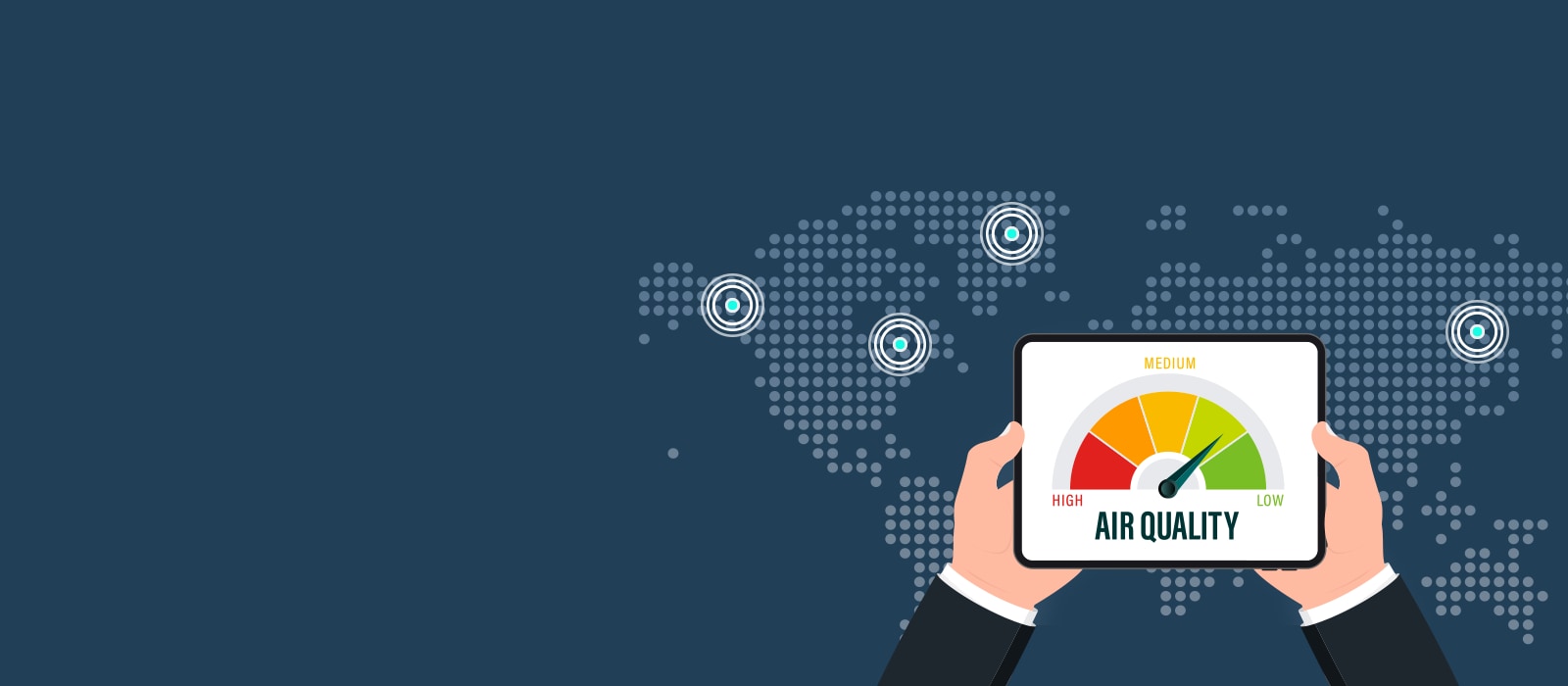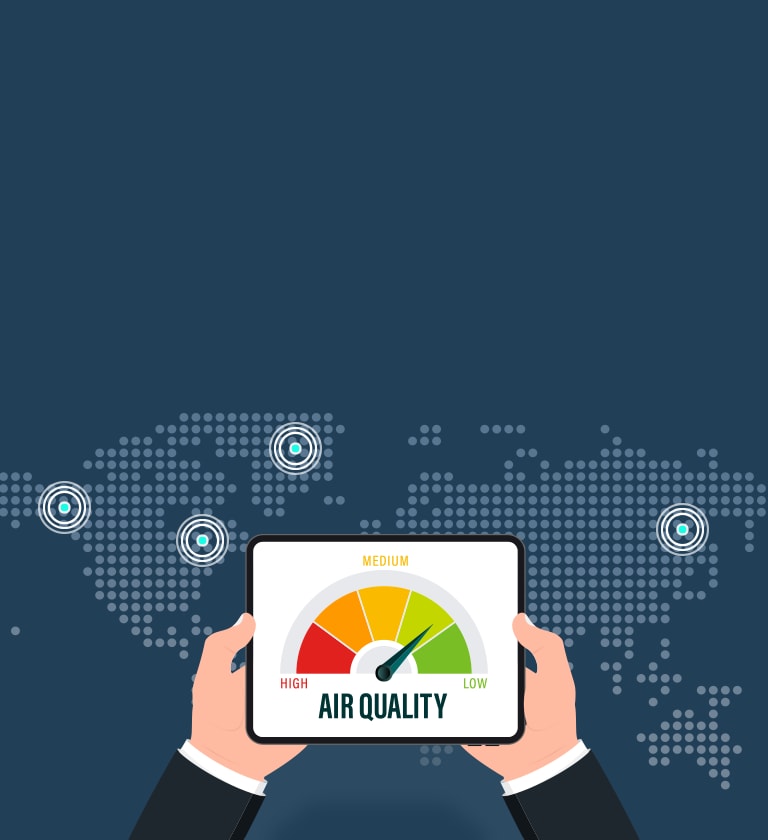-
Indoor Air Quality (IAQ) is more than just a buzzword—it’s vital for maintaining the health, productivity, and comfort of everyone who spends much of their time indoors, which let’s face it, is most of us. Worldwide, IAQ standards are continually being refined. More countries are stepping up to the plate, crafting and revising guidelines to manage air pollutants more effectively and to boost the quality of air in our living and work spaces. While many of these standards across the globe are guidelines rather than regulations, their goal remains the same: to help us create healthier indoor environments and, therefore, improve our individual health and well-being.
-
Global IAQ Standards
The World Health Organization (WHO) doesn't just focus on the big stuff; they provide crucial guidance on the smaller things that matter too, like particulate matter, radon, volatile organic compounds (VOCs), and biological contaminants. These guidelines help countries frame policies that keep the air indoors as healthy as it can be. When it comes to setting the blueprint for healthier buildings, the International Organization for Standardization (ISO) lays down the guidelines. Standards like ISO-16814:2008 and the updated ISO 16000-40:2019/Amd 1:2024 ensure that building designs prioritize air quality, making indoor environments safer and more comfortable.


-
Standards in the North American Continent
In the US, both the Environmental Protection Agency (EPA) and the American Society of Heating, Refrigerating, and Air-Conditioning Engineers (ASHRAE) are leading the charge in setting indoor air quality standards. The EPA's guidelines keep a close eye on pollutant levels, ensuring that the air we breathe in homes, schools, and offices remains clean and healthy. ASHRAE's Standard 62.1 takes it further, focusing on ventilation, air distribution, and air cleaning to ensure fresh and health-friendly indoor air. Similarly, in Canada, keeping indoor air safe is a priority, highlighted by the Residential Indoor Air Quality Guidelines (RIAQG) from Health Canada. These guidelines provide clear directions on maintaining optimal air quality, while Canada's approach to understanding specific pollutants empowers homeowners to address air quality issues effectively.


-
Standards in the EU
In the EU, the spotlight is on ensuring buildings breathe well, thanks to BS EN 13142:2021. This standard sets rigorous criteria for building ventilation systems, ensuring they are designed not just for comfort but also for the health of everyone inside. The European Environment Agency (EEA) takes a cue from the global playbook by aligning closely with the World Health Organization's guidelines. This adherence reinforces a unified approach to tackling indoor air quality issues across Europe, ensuring that the standards are both internationally respected and locally effective.
-
Standards in Asia
Northeast Asian nations like South Korea and Japan have established IAQ guidelines that align closely with those of the World Health Organization. In South Korea, these standards are overseen by the Ministry of Environment, while in Japan, the Committee on Sick House Syndrome focuses on measuring indoor air quality, and JEM 1467 sets the criteria for air cleaners. Southeast Asian governments have also set IAQ standards based on WHO guidelines. For instance, Malaysia’s Department of Occupational Safety and Health has introduced the Indoor Air Quality Code of Practice, while India uses the standard from the Indian Society of Heating, Refrigerating, and Air Conditioning Engineers (ISHRAE) for indoor air quality measurement.


-
Standards in the United Arab Emirates (UAE)
In the UAE, the Dubai Municipality has set standards for IAQ, concentrating on three main factors: formaldehyde, Total Volatile Organic Compounds (TVOC), and suspended particulates, also known as particulate matter. According to these regulations, formaldehyde levels shouldn't go beyond 0.08 parts per million (ppm), TVOC levels should stay below 300 micrograms per cubic meter (μg/m³), and suspended particulates should be kept under 150 μg/m³.
Natural refrigerants such as R717, R744, R290, and R600a have much lower GWPs compared to synthetic refrigerants like R32 and R454B, and they are cheaper. However, R717, R290, and R600a have higher risks of flammability, requiring strict safety measures and special handling. In terms of efficiency, synthetic refrigerants are still better choices than natural refrigerants.
-
Standards in the Republic of South Africa
In South Africa, IAQ standards follow WHO guidelines, covering various factors such as particulate matter, Carbon Monoxide (CO), and Nitrogen Dioxide (NO2). Particulate matter levels are regulated at 50 milligrams per cubic meter (mg/m³) over 24 hours and 20 mg/m³ annually. CO limits vary based on exposure duration, ranging from 100 mg/m³ for 15 minutes to 7 mg/m³ for 24 hours, and NO2 exposure should not exceed 200 mg/m³ for one hour and 40 mg/m³ annually.
-
A Deeper Look into IAQ
If you’re interested in learning more about IAQ standards throughout the rest of the world, there are many resources to help you find the information you’re looking for. For those keen on diving deeper, the International Society of Indoor Air Quality and Climate's Scientific Technical Committee 34 (STC34) is a treasure trove of expertise. This committee not only studies but also sets the pace for research and innovation in indoor air quality. The ISIAQ's database at IEQ Guidelines offers a detailed look at the IAQ standards applied across 34 countries, providing invaluable insights into global practices and policies.
-
As we explore various international standards, it becomes clear that harmonizing global IAQ standards goes beyond mere uniformity; it's about creating a universal framework that ensures the air we breathe indoors, whether at home or work, is consistently safe and clean worldwide. By bridging the gaps between different international standards and focusing on comprehensive air quality measures, we can cultivate healthier environments worldwide, and construct safer, more sustainable spaces for future generations. Stay tuned for the next installment in the IAQ series, where we'll discuss practical steps, you can take to maintain cleaner air in your home.




